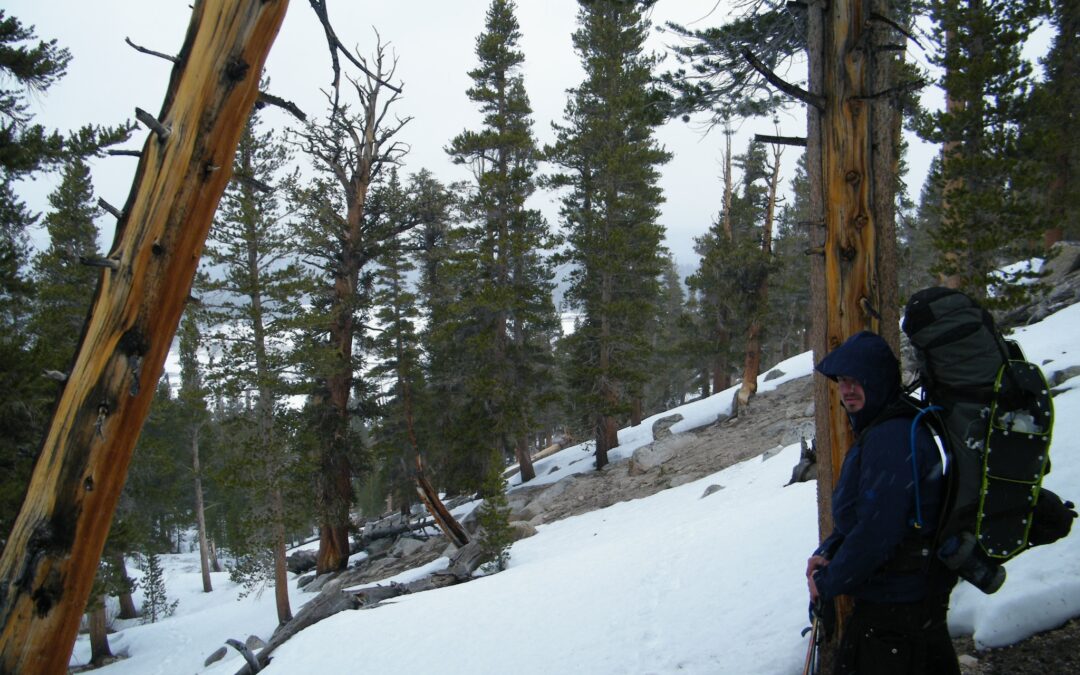Hazardous Weather concerns…Whether you start on your Permit Date or wait and see what happens, this is what is going on. You must decide what you’re willing to expose yourself to.
- The Storm Door remains open, as you can watch in the NOAA satellite video of the eastern Pacific, so once you hit the trail, it’s just your jacket, tent, gaiters, and shoes that will protect you from the weather that has yet to impact Southern California for the next month or two.
- Cold storms with snow will continue, IF the Jet Stream persists in dipping into the Arctic (as it has been) before descending along the Pacific Coast. [Prepare for kicking through powder snow (think cold, wet, and miserable) until it consolidates over time and you can walk on top of the snowpack]
- Warm spring rains may arrive, IF the Jet Stream flattens out in the near future and scoops up Tropical moisture before coming our way. [Prepare for wet trail, flash flooding in the desert, and wetter snow to wallow through up at elevation]
- Between those two extremes exists the worst possible weather and that is from Freezing Rain. IF the Jet starts migrating south, leaving the cold air up north and picking up more warm moisture from the south, the chance of Southern California and the Sierra receiving a bout of freezing rain could happen. [Do not get wet in a cold environment without excellent shelter and a stove, to say the least]
There will be breaks between storm systems where the sun will come out, the high desert will warm up, snow will melt, and there will be more dry trail to walk on, but this amount of time, I’m expecting, will be counted as an interim of days or, maybe, a week. Because of these sudden and radical swings in the weather environment around you, you may think that I’m crazy in educating and forewarning you about what may come. During the transition from Winter to Spring (whenever that happens this year), always pay attention to the weather forecasts for your area and watch the skies to confirm changing signs of incoming weather!
All that was to empower you to know what to look for to guide your decisions as to start on your permit date, delay, or wait longer for the weather picture to improve. It’s your call, but an informed decision is always better, safer, and wiser.
Lastly, know the differences between freshly-fallen, Powder snow and settled, hardened, Consolidated snow because you can walk on top of frozen, consolidated snow while you’ll have to kick through the powdery, soft stuff, getting wet and cold in the process. A few days after a storm, Powder snow settles and, either melts or refreezes at night to form a hard mass that may hold your weight. The key will be the air temperatures both at night, to refreeze the softened snow, and during the day, to melt it.
This can’t be predicted and both have their dangers. Soft snow gets you wet and cold and can lead to hypothermia(employ thermal and waterproof layers). Hard, re-frozen snow you can walk on, risking only your feet getting wet and cold, but it’s slippery and you can fall and tumble downhill to death or injury (employ two poles with snow baskets to prevent a loss of balance, traction devices, like Microspikes or hiking-crampons, to prevent slip-and-falls, and a self-arrest device in your hand, like an ice axe or a substitute, self-arrest pole to stop a tumble after the fall).
After hearing from snowpack observers in Wa, Ore, NorCal, Tahoe, and in the Sierra, recently, the 2023 PCT thru-hiking season is starting to shape up to be like the one I had in 1974 where the snow was Border to Border with either dry or muddy trail in spots.
This does not mean that the “route,” for that is what it is when buried under snow, is impassible. It means that you need to be aware of the changing environmental conditions around you, Able to Identify Risk, and either willing to avoid it or able to mitigate it for safety by having the right “tools” with you (clothing, gear, or skills).
The main key to safe passage this year will be the condition of the snowpack wherever you are.
IF it is hard and consolidated, refreezing every night, walk on and don’t fall!
IF it is soft and melting during the Thaw, employ safe, nighttime snow-hiking skills to get around the suncups, careful strategy to get over the passes in time for backside glissades, and be extra-careful with those Thaw-fed creek crossings!
Remember, it is the condition of the snow that will dictate what you can do or not. Hunker down when it’s too mushy for walking or storming and make your miles when it’s frozen enough to walk on top of it.
No matter what you chose to do, always be
- Alert and Aware of the weather-changing environment around you,
- Educated enough to Identify Risks around you,
- Fed, warm, and dry enough to make wise decisions, and
- Willing to Avoid Risk by going around or turning around!

